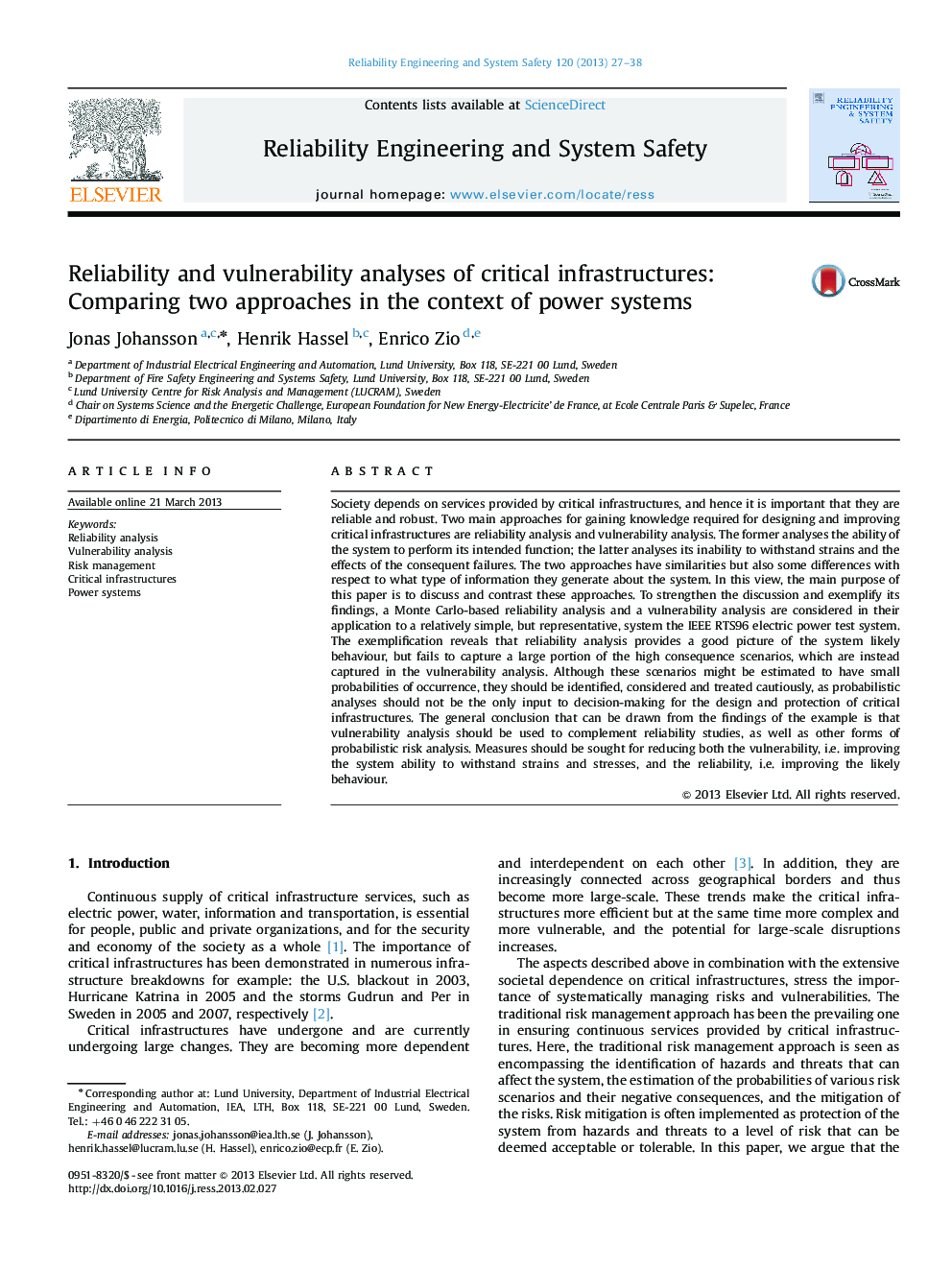| Article ID | Journal | Published Year | Pages | File Type |
|---|---|---|---|---|
| 803121 | Reliability Engineering & System Safety | 2013 | 12 Pages |
Society depends on services provided by critical infrastructures, and hence it is important that they are reliable and robust. Two main approaches for gaining knowledge required for designing and improving critical infrastructures are reliability analysis and vulnerability analysis. The former analyses the ability of the system to perform its intended function; the latter analyses its inability to withstand strains and the effects of the consequent failures. The two approaches have similarities but also some differences with respect to what type of information they generate about the system. In this view, the main purpose of this paper is to discuss and contrast these approaches. To strengthen the discussion and exemplify its findings, a Monte Carlo-based reliability analysis and a vulnerability analysis are considered in their application to a relatively simple, but representative, system the IEEE RTS96 electric power test system. The exemplification reveals that reliability analysis provides a good picture of the system likely behaviour, but fails to capture a large portion of the high consequence scenarios, which are instead captured in the vulnerability analysis. Although these scenarios might be estimated to have small probabilities of occurrence, they should be identified, considered and treated cautiously, as probabilistic analyses should not be the only input to decision-making for the design and protection of critical infrastructures. The general conclusion that can be drawn from the findings of the example is that vulnerability analysis should be used to complement reliability studies, as well as other forms of probabilistic risk analysis. Measures should be sought for reducing both the vulnerability, i.e. improving the system ability to withstand strains and stresses, and the reliability, i.e. improving the likely behaviour.
